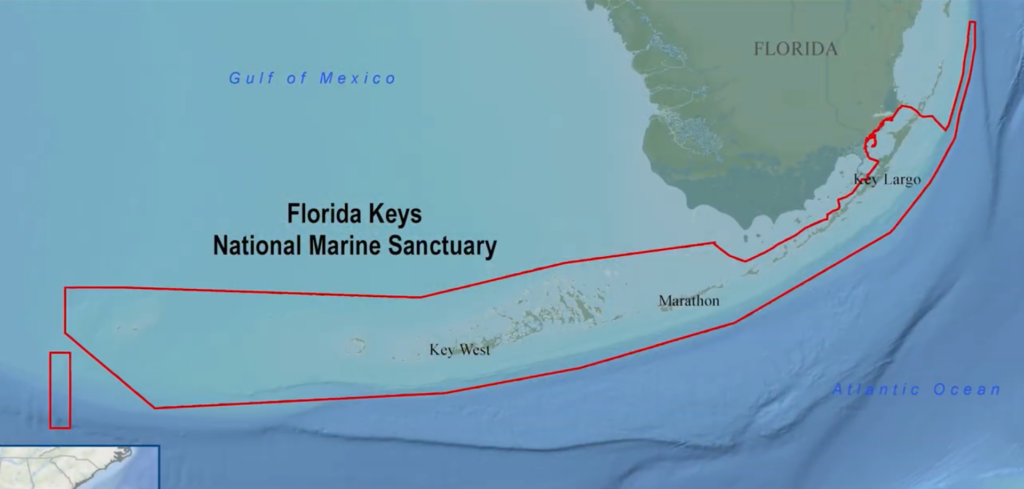Since 1990, the Florida Keys National Marine Sanctuary has been tasked with protecting the only barrier coral reef in the continental United States.
Well, after nearly 30 years of experience under its belt, the sanctuary is releasing the “Restoration Blueprint,” a comprehensive plan on how to protect the Florida Keys.
“We have new zones proposed, we have boundary changes that we are proposing, so it is a comprehensive look,” Florida Keys National Marine Sanctuary Superintendent Sarah Fangman explained to WLRN News.
The National Oceanic and Atmospheric Administration, the governing body of the sanctuary, wants the public’s input on the proposed changes to the management of the sanctuary. This is why when the blueprint is released on Tuesday it will be found on the Florida Keys National Marine Sanctuary’s website and discussed at a Sanctuary Advisory Council meeting.
The Sanctuary Advisory Council – which represents the community, industries and governments – is holding the meeting at 9 a.m. at the Isla Bella Beach Resort located at 1 Knights Key Boulevard in Marathon.
According to WLRN, the community will have four alternatives they can choose from: a preferred alternative, no changes, less restrictive changes and more restrictive changes.
The fragile ecosystem of the Keys has been under siege from a variety of threats that sanctuary has been hard at work fighting. Those threats include:
Coastal Development
Water Quality
Invasive Species
Marine Debris
Coral Bleaching and Disease
Climate Change and Ocean Acidification
Disturbances To Wildlife
Overfishing
Vessel Traffic and Groundings
“The strategies we’re proposing aren’t going to fix those global issues,” Fangman told WLRN News. “But what they’re going to do is help this system be stronger.”
The restoration blueprint, which is based on restoration science, technical experience and community involvement, will focus on the factors the sanctuary can control, such as zoning, regulations and volunteer programs.
“We’ve got to remain vigilant, we’ve got to be good stewards,” said George Neugent, the former mayor of Monroe County, “This treasure is for our children and grandchildren and for other people throughout the United States and the world, for that matter.”
Currently, the sanctuary protects a total of 3,800 square miles that are home to 1.4 million acres of seagrass beds, more than 6,000 marine species, 1,800 miles of mangrove shoreline and 800 historical sites.

“Future of generations have a right to be able to see what I’ve seen, and I’m afraid that the reality is, is that there are so many environmental factors pushing in the wrong direction here,” said Ben Daughtry, a tourist business operator. “It’s important that we try to do something to help get the environment going back in the right direction.”
Approximately 60 percent of jobs in the Florida Keys are connected to the marine ecosystem that supports $3.38 billion in sales and income as well as $2.1 billion in spending.
“We have the Gulf of Mexico to the north, the Atlantic to the south, so our lives, our economy, our culture, everything about us is tied to the ocean, ” said Will Benson, a Florida Keys flats fishing captain. “Fishing in the Keys, diving in the Keys, living in the keys – you are absolutely connected to the ocean at every moment.”
Mike has more than 30 years of experience in marketing and public relations. He once owned his own agency and has worked with some of the largest brands in the world.

